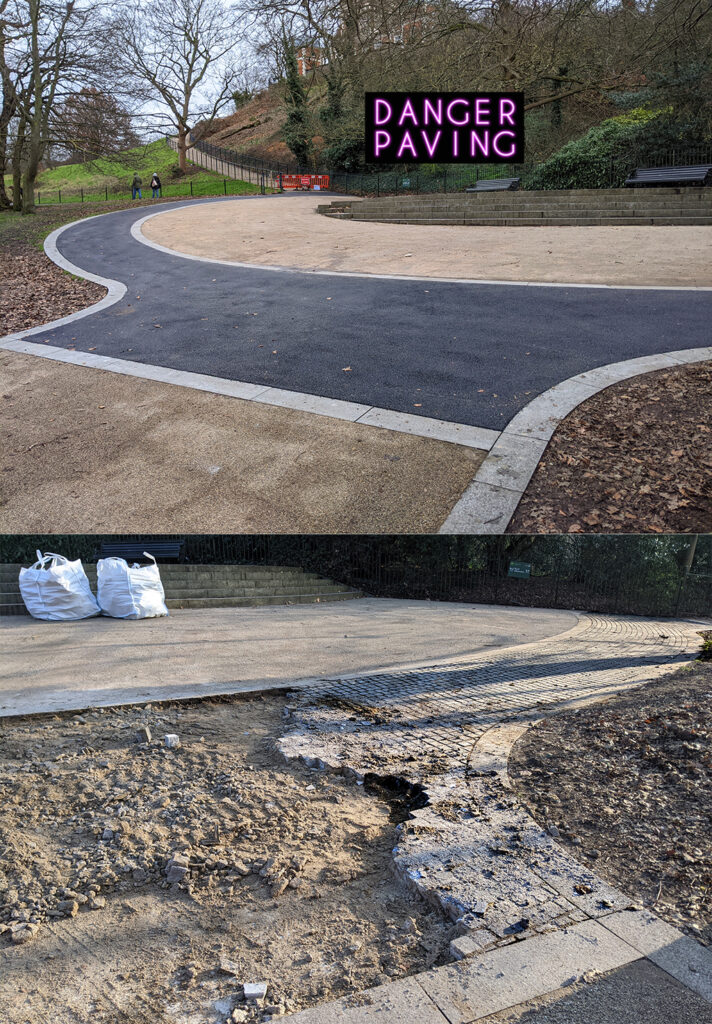Madness in Greenwich Park

The granite setts below below the Royal Observatory and on the heavily used visitor route to the Maritime Museum have been replaced by bitumen macadam. Chris Churchman was the landscape architect for the walk and platform. He designed it as part of Greenwich’s celebration of the Year 2000 Millennium. All was fine for 21 years. Now the sets have gone – because someone slipped on them. I’ve often wondered if membership of the Landscape Institute should be a required qualification for managing a Royal Park. Now I know it should be. Here are a few of the points a landscape architect would have considered:
- The smooth granite kerbs left in place are more slippery than the setts which have been removed
- Greenwich Park has 4 million visitors/year. Assuming at least half of them pass this point, that’s 40 million people in 21 years. If one of them has slipped that is not a mass disaster and, in fact, less serious than the Covid 19 pandemic that has led to the path up the hill being closed to visitor use
- Bitmac is a relatively short-life material with a high carbon content. It is less sustainable than granite and more harmful to global warming
- The re-paving took about 12 man-days and involved 3 vehicles
- Porous paving is better for the environment than impermeable paving – and the granite setts were not mortared in place
- Granite can be sandblasted to make it non-slip
- Granite can have a special coating to make it non-slip
- Granite can be scored with an angle grinder to make it non-slip (as was done for the Diana Memorial Fountain in Hyde Park
- The bitmac would look slightly better if coated with resin-bonded flint pebbles, like the adjoining paving
- The road which runs down the hill 50m from this paved area is more slippery than the granite and should have priority for treatment
- The new paving looks awful: like a mini road or a go-kart track
- A cheaper solution would have been to put up a flashing neon sign warning visitors of DANGEROUS PAVING
